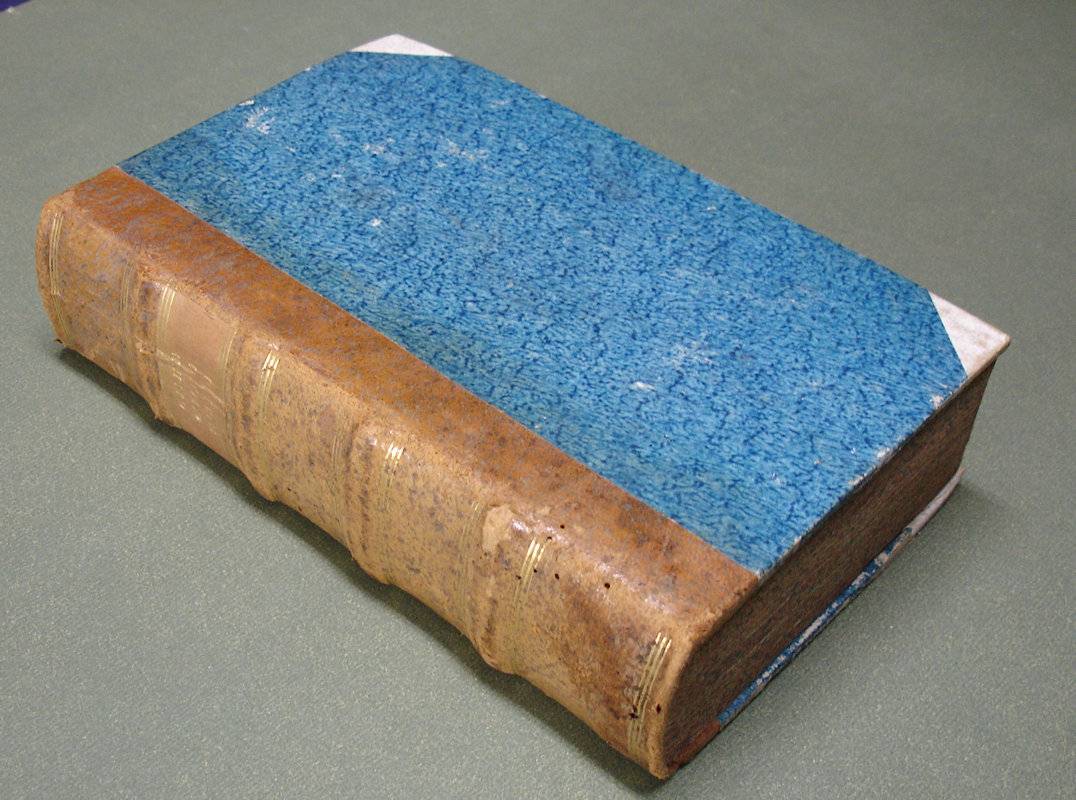PLINIUS MINOR.
C. Plinii Caecilii Secundi Epistolarum libri X. Notis integris Is. Casauboni, Jani Gruteri, H. Stephani, Augusti Buchneri, Casp. Barthii, Joh. Fred. Gronovii, Selectissimisque Joh. Mariae Catanaei, Ritterhusii & aliorum, insertis suo loco integris commentariis Francisci Balduini, J.C. Cunradi Ritterhusii, J.C. & Gerh. Joh. Vossii in 'Relationem' seu consultationem 'Plinii', & ad hanc 'Rescriptum Trajani' Imper. de 'Christianis', illustrati & accurate recensiti a Johanne Veenhusio, Brem.
Leiden, Rotterdam (Lugd. Batav. Roterodami), Ex Officina Hackiana, 1669.
8vo. (LII),818,(23 index),(1 blank) p., frontispiece. 19th century half calf. 19.5 cm 'We shall have reason to congratulate ourselves on the acquisition of so elegant and desirable an edition' (
Ref: STCN ppn 840239440; Schweiger 2,809; Brunet 4,722: 'bonne édition'; Fabricius/Ernesti 2,415, among the 'meliores editiones'; Dibdin 2,331: 'is one of the scarcest and most valuable of the octavo Variorum classics'; Moss 2,494/95: 'the text of Pliny is correct, and the select notes of Veenhyseen (sic) do great credit to his learning and judgment'; Ebert 17351: 'eine der bessern Augaben cum notis varior.' Graesse 5,347/48) (
Details: Back ruled gilt, and with 4 raised bands. The frontispiece, engraved by G. Wingendorp, depicts Plinius at his desk, in front of him 2 quills and an inkpot. Woodcut printer's mark on the title, depicting a soaring eagle, motto 'Movendo'. Dibdin adds: 'and whether we consider the elegance of its typography, the accuracy of the text, or perspicuity of the notes, we shall have equal reason to congratulate ourselves on the acquisition of so elegant and desirable an edition'. Winckelmann used this 1669 edition of Pliny when he visited the Laurentine Villa (Ep. II,17) of Pliny) (
Condition: Binding slightly scuffed. Seven small wormholes at the foot of the spine. New endpapers. Ownership entry on the title. Some foxing) (
Note: The Roman civilian administrator Gaius Plinius Caecilius Secundus, 61-112 A.D, published 10 books of literary letters, consisting of short essays, character sketches and sensible observations. The letters paint the high society of the young Roman empire. The ninth book contains Pliny's correspondence with the emperor Trajan. Pliny is famous for his description of the eruption of the Vesuvius on the 24th of August in 79 A.D. He was a nephew of the encyclopedist Pliny the Elder, who died, observing the eruption from afar, overcome by poisonous fumes. Pliny the Younger held under Trajanus a number of magistracies. In 111 or 112 he became governor of Bithynia. From here he was in constant correspondence with the Emperor. His letters, which were conceived of as artistic productions, are more or less epistolary essays. In the late antiquity and later in the Renaissance the literary letter had a widespread influence.
§ The German classical scholar Johannes Veenhusius of Bremen, 1643-1675, published the 'Epistulae' with the complete commentaries of Casaubon, Gruterus, Henri Estienne, Buchnerus, Barthius, Johannes Fredericus Gronovius, and with select notes of Cattaneo, Ritterhusius, and himself. The emendations of Gronovius are published here for the first time. Added are Henri Estienne's 'Praefatio' and Conrad Lycosthenes' 'Vita Plinii', Boxhornius' essay on Pliny's alleged Christianity, and the notes of Balduinus, Ritterhusius and the Vossii. For his text of the 'Epistulae', Veenhusius generally follows Estienne/Cattaneo, even when he reports in the footnotes the notes and the comments of other scholars who disagree with or correct the text he is printing. To confirm Pliny's authorship of book 10, he reprints at the beginning of that book the dedicatory letter of Giovanni Maria Cattaneo, who published an edition of Pliny's letters in 1506, to Ambrogio del Maino. In his own dedication to the officials of the city of Bremen, Veenhusius speaks of the difficult task of an editor. But he affirms that Pliny is an author worthy of their sponsorship; many of his letters deal with Roman law, which would be useful to compare with common law, and many contain learned observations about antiquity and politics, which are not only useful but also necessary to know. ('Catalogus Translationum Et Commentariorum: Mediaeval and Renaissance Latin translations and commentaries, annotated lists and guides'. Volume IX, editors V. Brown,J. Hankins,R. A. Kasterp, Washington, 2011, p. 94)
§ Not much is known about Veenhusius, he is not to be found in ADB and NNBW. At the beginning of the 'dedicatio' to this edition he calls himself Johannes Veenhusen, and Bremen his 'Patria'. In 1671 he produced for the Leiden publisher Hackius another 'Variorum' edition, now of Statius.) (
Provenance: On the title 'Bibliotheca vallis Sti Lamberti, 1749'. We found on the internet one book with exactly this same provenance: ((crlv))((org))/bibliographie-des-voyages/1203. The Cistercian abbey Val St. Lambert was situated in Seraing, Southwest of the Belgian city of Liège. It was founded in 1202 and closed down in 1796. Nowadays it is a crystal glass factory. (See Wikipedia 'Val-Saint-Lambert'). On the front flyleaf the name of the Dutch specialist of Roman law 'J.W. Tellegen'. On the front pastedown a small label of 'Libreria dello Studente, Add.: Paolo Franchini, Firenze') (
Collation: *-3*8, 4*2; A-3G8 (leaf 3G5 verso blank; minus leaf 3G6, 7 & 8) (Photographs on request)
Book number: 153325 Euro 420.00
Keywords: (Oude Druk), (Rare Books), Biographie, Correspondence, Dutch imprints, Epistulae, Latin literature, Letters, Panegyricus, Plinius Minor, Pliny Minor, antike altertum antiquity, biography, römische Literatur
 PLINIUS MINOR.
PLINIUS MINOR.